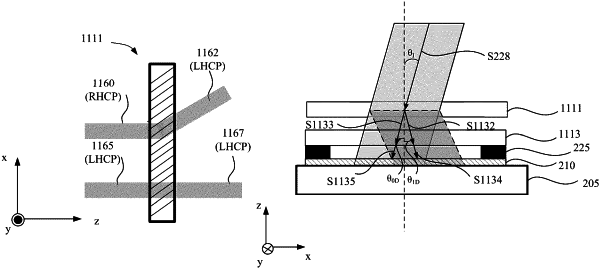| CPC G03H 1/0402 (2013.01) [G02B 27/286 (2013.01); G03H 1/0248 (2013.01); G03H 1/0465 (2013.01); G03H 2001/0216 (2013.01); G03H 2001/0413 (2013.01); G03H 2001/0439 (2013.01); G03H 2001/0441 (2013.01); G03H 2223/20 (2013.01); G03H 2223/22 (2013.01); G03H 2223/23 (2013.01); G03H 2223/24 (2013.01); G03H 2227/05 (2013.01)] | 19 Claims |

|
1. A system, comprising:
a polarization volume hologram (“PVH”) mask configured to forwardly diffract an input beam as a first set of two collimated circularly polarized beams having a same handedness, wherein the two collimated circularly polarized beams in the first set output from the PVH mask have a zero diffraction angle and a non-zero diffraction angle respectively, and have non-parallel propagation directions; and
a polarization conversion element configured to convert the first set of two collimated circularly polarized beams into a second set of two collimated circularly polarized beams having opposite handednesses and having the non-parallel propagation directions,
wherein when the two collimated circularly polarized beams in the second set are output from the polarization conversion element, the two collimated circularly polarized beams in the second set interfere with one another to generate a polarization interference pattern.
|